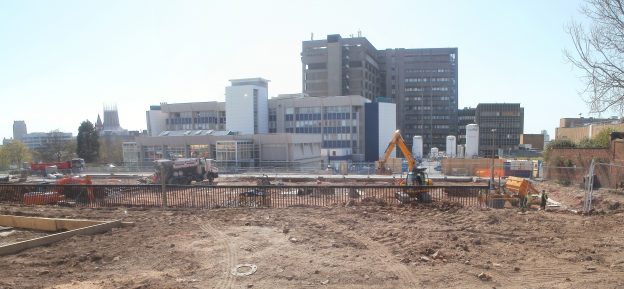In a day of turmoil for the Government, Kit Malthouse, the little known former Department of Work and Pensions Minister, has been appointed as the new Housing Minister.
Elected as MP for North West Hampshire in 2015 Malthouse has maintained a low but fairly well-respected profile, serving as a Parliamentary Under-Secretary at the DWP, Deputy London Mayor for Business and Enterprise, and Deputy Leader of Westminster Council.
With a range of experience under his belt, Malthouse’s arrival will be met with muted enthusiasm from across the board as a sensible appointment given the circumstances and the need for stability.
But as a supporter of localism and a strong plan-led system to increase housing supply it is just possible Malthouse could emerge as the Housing Minister to provide the planning reforms we need.
Malthouse on Housing
Malthouse has previously spoken out in the House of Commons in support of a plan-led system and strongly supported the introduction of Neighbourhood Plans to maintain local input during the strong growth in housing.
He also welcomed the standardisation of the calculation of housing supply for local authorities, which will be vital to drive through the new NPPF in the coming months.
Interestingly he has criticised the role of the Planning Inspectorate for its involvement in planning in the past, saying that it is often used as an excuse to slow things down as a “complicated game of chicken is played between developer, local authority and local community”.
Elsewhere he has written for the Times, arguing that local authorities should let flats to rough sleepers for free as a basis for providing support to the homeless.
Shaky Foundations
Theresa May’s promise that housing is “at the top of the Government’s agenda” rings somewhat hollow now, given she in on her fourth Housing Minister since her appointment as Prime Minister two years ago.
Malthouse replaces Dominic Raab, the ardent Vote Leave campaigner and former lawyer who has been confirmed as the man to lead Theresa May’s Cabinet as the new Brexit Secretary.
Raab managed a grand total of six months as Housing Minister following his appointment to Theresa May’s cabinet reshuffle in January, replacing Alok Sharma who spent just seven months in the role. His credibility took something of a hit this year over accusations of ‘dog whistle’ politics as he used discredited statistics to link the housing crisis to immigration.
In a year that has also seen MHCLG lose Sajid Javid as Communities Secretary and Marcus Jones as Local Government Minister, Malthouse will be tasked with bringing stability to a Housing agenda undermined by constant change.
A Tall Order
Malthouse will immediately take over the mantle of delivering a housing agenda to build on million new homes by 2020. And he will have his work cut out for him.
July will be an incredibly busy month with both the Social Housing Green Paper and revised NPPF due for publication. Alongside this, work will continue on reforms to the rental sector while allocation of funds such as the £3billion Home Building Fund will need to be addressed.
MHCLG have committed to delivering the revised NPPF, which has already been delayed and tinkered with over the last year, this month. Given Raab’s departure today and the need to bring Malthouse up to speed with complex regulations, it is looking increasingly unlikely they will be able to deliver to this timescale before Parliament breaks for Summer Recess next Friday 20th July.
If he gets up to speed quickly and heals the hurt left by yet another departing Housing Minister, Malthouse has every opportunity to stamp his mark on the portfolio at a time when bold and stable leadership is desperately needed.
Chelgate Local
Chelgate Local has been providing strategic communications advice to residential and commercial developers for 30 years. We are working on 30 projects across London, Home Counties, East Anglia and the East Midlands which could provide 92,000 new homes.
To discuss how we could help your business navigate the planning system get in touch with Mike Hardware on 020 7939 7949 or mhardware@chelgate.com.









